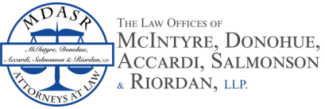January 2021 New York
Workers’ Compensation Law Reporter Highlights
Claimant must deduct prior bicep SLU from current shoulder SLU
Case name: Liuni v. Gander Mountain, 120 NYWCLR 197 (N.Y. App. Div. 2020).
Ruling: The Appellate Division affirmed the Board’s ruling that the claimant was entitled to a 5 percent schedule loss of use of his left arm for a shoulder injury.
What it means: A claimant’s injuries to his left bicep and shoulder are not eligible for separate schedule loss of use awards because they are both encompassed by SLU awards for the left arm.
Delay in filing blocks claim for hearing loss
Case name: Walczak v. Asplundh Tree Expert Co., 120 NYWCLR 203 (N.Y. App. Div. 2020).
Ruling: Upon review, the Appellate Division affirmed the Board’s ruling that the claimant’s hearing loss claim was time-barred by WCL Section 28.
What it means: Where the evidence indicates that the claimant was routinely exposed to loud noises at work, he was sometimes unable to wear hearing protection, he first recognized he was having trouble hearing in 2002 or 2004, and the treating doctor recommend a hearing test in January 2012, sufficient support exists for the determination that the claimant should have known his hearing problem was related to his employment no later than January 2012.
Claimant may be entitled to additional indemnity benefits despite surpassing cap
Case name: Minichiello v. New York City Dept. Homeless Services, 120 NYWCLR 198 (N.Y. App. Div. 2020)
Ruling: Upon review, the Appellate Division reversed and remitted the Board’s decision finding the claimant not entitled to additional indemnity benefits because he had surpassed the cap of his maximum weeks of benefits under WCL Section 15(3)(w).
What it means:Although WCL Section 35(3) provides an additional opportunity for certain permanent partial disability claimants with a loss of wage-earning capacity greater than 75 percent to continue benefits after the exhaustion of their capped weeks if, within the year prior to the exhaustion of their indemnity benefits under WCL Section 15(3), they can establish extreme hardship, the court rejected the interpretation that only those claimants are eligible to extend their benefits by seeking a redetermination to total industrial disability status in light of the plain meaning of WCL Section 35(2)
Maintenance worker secures benefits for fall at work
Case name: Albany, Country of, 120 NYWCLR 188 (N.Y. W.C.B., Full Board 2020)
Ruling: Upon mandatory review, the Full Board held that the preponderance of the evidence supported a finding that the claimant, who fell down a flight of stairs at work, sustained injuries that arose out of and in the course of employment.
What it means: Even if a claimant’s fall at work was the result of a seizure which was not related to his work, thereby rebutting the presumption created by WCL. Section 21(1), if the fall occurred while the claimant was in the course of his employment and descending a flight of stairs, his employment placed him at an increased risk and his resulting injuries would nonetheless be compensable.
Work-at-home employee’s claim warrants remittal for application of proper standard
Case name: Case name: Capraro v. Matrix Absence Management, 120 NYWCLR 181 (N.Y. App. Div. 2020)
Ruling: Upon review, the Appellate Division reversed the Board’s ruling that the claimant’s injury, sustained while carrying office furniture upstairs at his home, did not arise out of and in the course of his employment.
What it means: A rigid new standard for employees working from home under which injuries are only compensable if occurring during regular work hours and while the employee is actively engaged in work duties is unsupported by precedent and inconsistent with the remedial nature of the WCL. The proper standard is whether the claimant was engaged in a purely personal activity that was not reasonable and sufficiently work-related under the circumstances.

Leave A Comment